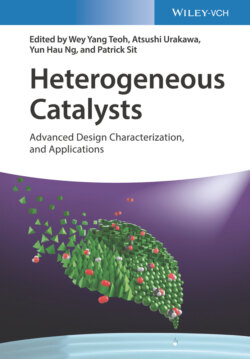Читать книгу Heterogeneous Catalysts - Группа авторов - Страница 58
4.3.4 Chemical Vapor Deposition Techniques on Carbon Supports
ОглавлениеCVD of organometallic precursors under oxidative conditions is a conventional technique for the deposition of nanoparticles on supports. Recently, atomic‐layer deposition (ALD) has emerged as a particular case of CVD. In contrast to conventional CVD, precursors are introduced as a series of sequential and nonoverlapping pulses. In each of these pulses, the precursor molecules react with the surface and the reaction ends once all the reactive sites on the surface are utilized. Therefore, the amount of material deposited depends on the precursor–surface interaction and the number of ALD cycles.
The ALD on pristine carbon supports such as graphene can be hampered by the limited interactions associated with basal planes, and ALD is only able to deposit material on defects and edges. Moreover, noble metal ALD on graphene is reported to lead to the formation of a mixture of atoms, clusters, and nanoparticles of Pt. Accordingly, in order to deposit single‐atom metal sites on graphene by ALD, a previous step of functionalization with oxygenated groups is necessary. Only recently, ALD has been used to prepare single‐atom Pt site on graphene functionalized with oxygen reactive sites [46]. By repeating the number of ALD cycles (exposure to metal precursor – O2), it is possible to go from single atoms to clusters of controlled size.
